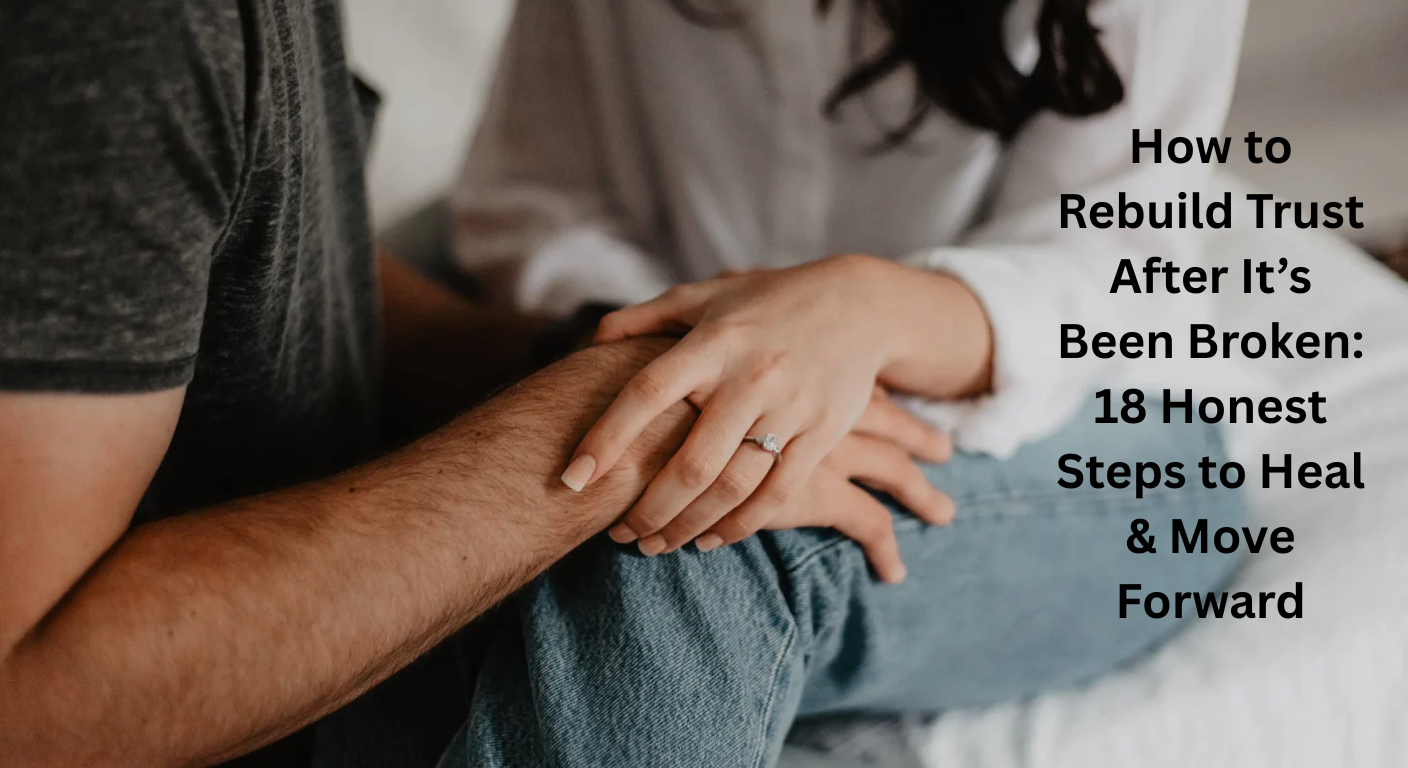Let’s be real, formerly trust is broken, it’s hard not to see everything through a cracked lens. You second guess words, question motives, and wonder if effects can ever feel solid again. But then a variety of mending is possible. Rebuilding trust doesn’t be overnight, and it won’t be without trouble from both sides. But with honesty, thickness, and vulnerability, trust can grow back stronger and deeper than ahead.
Whether it’s a relationship, fellowship, or family bond, there are 18 real, predicated ways to help rebuild what was lost.
1. Take Full Ownership (No Excuses)
If you’re the one who broke the trust, start by owning it completely. No deflecting, blaming, or downplaying.

Say this: “What I did hurt you. I take full responsibility.”
2. Allow Space for the Hurt
Healing can’t be rushed. Let the other person feel and express their pain without pressure to “get over it.”
If you were hurt, honor your emotions. You don’t need to explain them away.

3. Have Hard Conversations—Regularly
You can’t rebuild trust in silence. Create space for regular, raw, honest dialogue—even when it’s uncomfortable.

Ask: “What do you need from me right now?” or “What’s still hurting?”
4. Commit to Radical Transparency
No more secrets. No hidden messages. No vague explanations.

Whether it’s checking in, sharing passwords, or just being open—it’s about showing you’re serious.
5. Apologize with Depth, Not Just Words
A real apology acknowledges the hurt, not just the act.

Say this: “I see the pain I caused. I understand why it’s hard to trust me. I’m here to change that.”
6. Let Actions Speak Louder Than Promises
Anyone can say they’ll do better. But rebuilding trust requires showing up, consistently and reliably, every day.

7. Make Emotional Safety a Priority
Trust only grows where people feel safe. This means listening without judgment, validating feelings, and being patient—even when it’s hard.

8. Get Clear on Boundaries
Both people should agree on what’s needed to feel safe moving forward.
That might mean space, daily check-ins, or temporary changes in routine.
9. Don’t Expect Instant Forgiveness

Rebuilding trust isn’t a switch—it’s a process. If you’re truly sorry, you’ll be okay with taking the long road back.
10. Be Patient with Setbacks
Even after progress, trust wobbles. Triggers will come up. Old fears will creep in. That’s normal. Don’t give up when things feel shaky.
11. Get Curious, Not Defensive
When hurt resurfaces, ask why, not why again. Defensive reactions just widen the gap. Curiosity closes it.

12. Understand the “Why” Behind What Happened
Understanding root causes helps healing. Was it fear, insecurity, avoidance, or trauma? Learn the why behind the broken trust so you don’t repeat the same cycle.
13. Work on Yourself (Individually and Together)

Therapy, self-reflection, journaling—whatever helps you grow. The more self-aware you are, the healthier the rebuild will be.
14. Be Accountable Long-Term
Rebuilding isn’t about a few good weeks. It’s about long-term consistency. Check in with your growth. Revisit agreements. Keep showing up.
15. Speak Their Love Language

Find ways to express care in ways that truly resonate. Whether it’s quality time, acts of service, or words of affirmation—go the extra mile.
16. Celebrate Small Wins
Did you have a tough conversation and stay calm? Did you feel connected again after a long time? Acknowledge it. Healing is made of small wins.
17. Stay Honest About Where You Are

If you’re struggling to trust again, say it gently. If you’re scared of messing up again, admit it. Honesty fosters empathy, and real progress
18. Believe in the Possibility of Healing

Most of all, don’t lose hope. You’re not the only ones who’ve been through this. With effort, trust can not only return, but thrive.
Final Thoughts
Trust is not erected on perfection. It’s erected on intention, communication, and action. However, it means you watch enough to try and that’s formerly commodity important, If you’re reading this. Whether you are repairing the bond or literacy to open your heart again, mending takes courage. You’ve got this.


